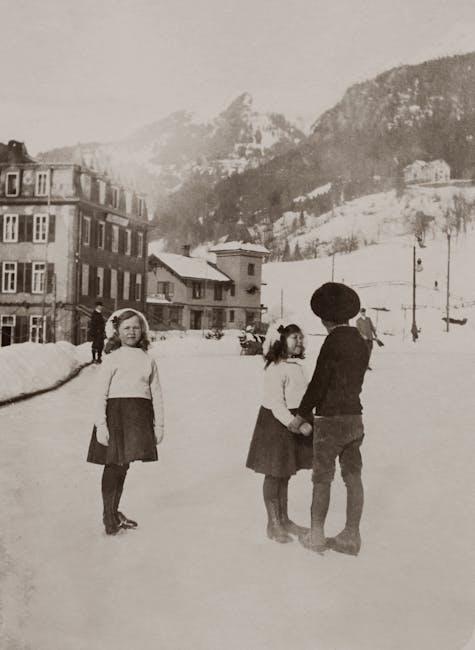Bong Joon-ho, the visionary South Korean filmmaker, has captivated global audiences with his masterful ability to blend genres, crafting narratives that are both innovative and deeply resonant. From the thrilling suspense of “Memories of Murder” to the poignant social commentary in “Parasite,” Bong’s films defy traditional categorization, seamlessly weaving elements of drama, comedy, horror, and science fiction. This unique approach not only keeps viewers on the edge of their seats but also invites them to explore complex themes through a fresh and engaging lens. As we delve into Bong Joon-ho’s remarkable filmography, we uncover the techniques and storytelling prowess that make his genre-blending style both groundbreaking and universally appealing.
Mastering the Art of Genre Fusion
Bong Joon-ho’s films are a masterclass in genre fusion, effortlessly weaving together seemingly disparate elements to create a unique cinematic experience. His ability to blend thriller, comedy, drama, and social commentary into a cohesive narrative is both innovative and inspiring. By challenging conventional genre boundaries, Bong crafts stories that are both entertaining and thought-provoking, engaging audiences on multiple levels.
- Unexpected Juxtapositions: Bong expertly contrasts tones, using humor to underscore tension and drama to heighten suspense, creating a dynamic viewing experience.
- Complex Characters: His characters often defy traditional archetypes, evolving in ways that mirror the fluidity of the genres they inhabit.
- Social Themes: The seamless integration of social issues into the narrative allows for a rich exploration of contemporary themes, making the films both relatable and profound.
By embracing this fluid approach, Bong Joon-ho not only entertains but also invites audiences to reflect on the complexities of the human experience, proving that genre fusion can be both an art and a powerful storytelling tool.

Exploring Narrative Depth Through Genre Layers
In Bong Joon-ho’s cinematic universe, the fusion of genres serves as a dynamic canvas where narrative depth is both crafted and explored. His films are a testament to how diverse genre elements can be interwoven to create a rich tapestry of storytelling. Comedy, thriller, drama, and horror are not just isolated components; they interact and elevate the narrative, making each scene unpredictable yet profoundly engaging.
Consider how Bong uses genre layers to delve into complex themes like class disparity in Parasite. The film starts with a comedic undertone, lulling the audience into a false sense of security, only to shift seamlessly into suspense and then horror, reflecting the chaotic unraveling of the characters’ lives. This approach not only keeps viewers on the edge of their seats but also encourages them to ponder deeper societal issues. Through such genre blending, Bong Joon-ho crafts stories that are as entertaining as they are thought-provoking.
- Unpredictability: Keeps audiences engaged and invested.
- Complexity: Allows exploration of multifaceted themes.
- Emotional Range: Provides a spectrum of emotional experiences.

Character Complexity in Multigenre Storytelling
In the realm of multigenre storytelling, Bong Joon-ho’s films stand out for their intricately layered characters that seamlessly bridge the diverse genres he explores. His characters often embody contradictions, reflecting the complexities of real human experiences. For instance, in “Parasite,” the Kim family is depicted with a blend of humor and desperation, allowing audiences to empathize with their struggles while also questioning their moral choices. This duality enriches the narrative, enabling a seamless transition between comedy, drama, and thriller elements.
- Emotional Depth: Characters are crafted with profound emotional journeys that resonate across genres.
- Relatable Flaws: Bong’s characters are not perfect; their imperfections make them more authentic and relatable.
- Dynamic Relationships: Interpersonal dynamics are used to explore themes of class, identity, and survival.
Bong Joon-ho’s mastery lies in his ability to create characters that evolve, adapting to the shifting tones of his films. This complexity not only enhances the storytelling but also ensures that each genre transition feels natural and impactful. By focusing on the nuances of human nature, Bong crafts narratives that are as unpredictable as they are compelling, drawing audiences into a rich tapestry of emotions and ideas.

Visual and Thematic Harmony in Genre Blending
Bong Joon-ho masterfully orchestrates visual and thematic harmony by weaving together diverse genres, creating films that defy conventional boundaries. His use of color palettes, camera angles, and set designs is meticulous, serving to unify disparate elements into a cohesive narrative. For instance, in “Parasite,” the stark contrast between the opulent Park family home and the cramped Kim family basement is not just a visual dichotomy but a thematic exploration of class disparity. The seamless transition between comedy, thriller, and drama is achieved through this visual storytelling, ensuring that each genre complements rather than clashes.
- Color Schemes: Carefully chosen to reflect mood shifts and thematic undertones.
- Camera Techniques: Dynamic shots that adjust with the narrative flow, enhancing emotional impact.
- Set Design: Environments that serve as visual metaphors for character development and plot progression.
By integrating these elements, Bong Joon-ho crafts films that resonate on multiple levels, inviting viewers to experience a rollercoaster of emotions while pondering deeper societal issues. This blend of genres is not just a stylistic choice but a deliberate artistic strategy that underscores his optimistic vision of cinema as a medium of limitless possibilities.































